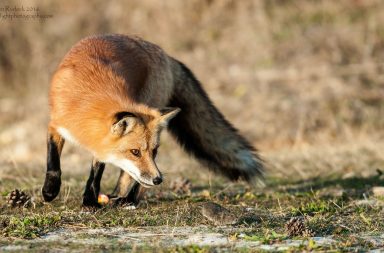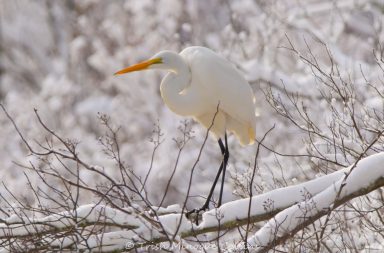We would like to welcome our newest contributor Dianne Taggart. Diane brings a wealth of knowledge and experience as an avid member of the Long Island Birding community for over twenty years. Dianne currently runs the LI Birds.com Facebook group after running a successful website focused on Long Island Birding for years. Diane will be doing a weekly column focusing on a bird of the week seen on Long Island. We will be including images from Dianne’s vast library as well as photos submitted by members of the Long Island Wildlife Facebook Page.
Ovenbird
6”Long 9.5”wingspan o.68 oz.
While walking in the woods at this time of year you may hear the call of a bird that sounds like it is saying “teacher, teacher, teacher” growing louder with each note. It’s a resounding, clear call that can be heard over great distances; a rather loud call for a small, but interesting bird…the Ovenbird.
Ovenbirds tend to be in hard to find places, but as you try to find the bird to identify it, look for a plump bird with a greenish brown back and a white breast with black spots/dashes on it. The head has an orange patch bordered with two dark stripes and the eye has a bold white eye ring. Most often, it walks along the forest floor on pinkish legs holding its short tail higher than its back. Some folks may confuse the Ovenbird with a Wood Thrush, also a forest dweller; however, the Wood Thrush is larger and the breast spots are rounder. With the Ovenbird’s plumb, upright body, and habit of walking (not hopping) slowly and steadily along the ground and tree limbs, identification is made easier.
Ovenbirds are in the warbler family; neo-tropic migrants that arrive on their breeding grounds (here on LI) in early May. They are different from other warblers, though, because they are slow-moving, ground dwelling birds. The male arrives first and establishes territory in deciduous forests, usually in the same area as previous years. He threatens rivals with tilted tail, drooping wings and kneading feet. Ovenbirds often “counter-sing”; males in adjoining territories will sing one song right after each other (or sometimes overlapping) continuing for 30-40 songs.
The females return soon after the male, at which time courtship begins consisting of sporadic singing, frantic chasing and flight songs. (Singing will continue until eggs hatch, when the Ovenbird becomes very silent and hard to find.) Since the female usually returns to the same area as the male, there is a strong tendency for the same birds to pair again. The female, after courtship, will choose a site and build a unique shaped nest from which the bird gets its name. She will scrape an area on the forest floor and begin to build a nest out of leaves, grasses, fibrous bark, sometimes including deer fur on the inside. The shape becomes dome like or a “dutch oven” with a side opening not visible from above. The nest takes about 5 days to build.
The female lays 4-5 eggs and incubates them alone (with male occasionally feeding her, arriving on foot as he approaches the nest) for about 11-13 days. The chicks are cared for by both parent birds and fledge at about 8-10 days. The young reach the early flying stage between 11-20 days, during which time they go through a hopping, while they forage, stage. The young will leave the nest one at a time (sometimes forced out by parents), and led away by a parent bird, while the other parent stays with remaining young. There is usually only one brood per year, but there may be more if food is abundant.
In some parts of the country the adult birds will begin the southward migration as soon as the young can take care of themselves. The immature birds will remain in the breeding territory until late September. Most birds will winter in Central America and as far south as Northern Venezuela. They are less reclusive on wintering ground, but still maintain individual territories; also, both male and female vocalize on wintering grounds.
Ovenbirds are sensitive to forest fragmentation as are many other species, but populations seem to be fairly stable at this time. Other names for Ovenbirds are “Golden Crowned Thrush” and “Teacher Bird”.
So when walking in the woods, listen for the “teacher, teacher, teacher” call and you will know there are Ovenbirds in the area. Good places to look for Ovenbirds on LI are in Hunter’s Gardens near Riverhead, Avalon in Stony Brook, Wertheim Refuge in Shirley, or almost any large undisturbed forest area.
Good Birding!
Photos from Long Island Wildlife Photography members on Page 2.



